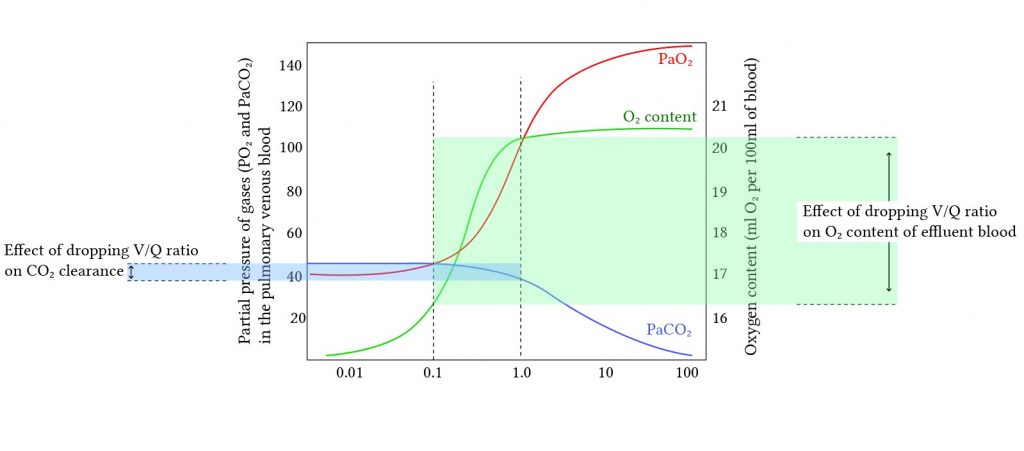How People Die: VQ Mismatch
Published .
Oxygen is an essential element for life and without oxygen humans can survive for few minutes only. There should be a balance between oxygen demand and delivery in order to maintain homeostasis within the body. The two main organ systems responsible for oxygen delivery in the body and maintaining homeostasis are respiratory and cardiovascular system. Abnormal function of any of these two would lead to the development of hypoxemia and its detrimental consequences. There are various mechanisms of hypoxemia but ventilation/perfusion mismatch is the most common underlying mechanism of hypoxemia.
The V/Q ratio is the amount of air that reaches your alveoli divided by the amount of blood flow in the capillaries in your lungs. When your lungs are functioning properly, 4 liters of air enter your respiratory tract while 5 liters of blood go through your capillaries every minute for a V/Q ratio of 0.8.
Ventilation/perfusion mismatch is the most common cause of hypoxemia. Ventilation, perfusion and V/Q ratio are not uniform in the human lungs. Ventilation and perfusion is higher at the base and lower at the apex of the lungs. However, V/Q ratio is higher at the apex and lower at the base. The ratio is low at the base as the rise in perfusion is much more than the rise in ventilation. The V/Q ratio is higher at apex because the fall in perfusion is higher than the fall in ventilation at the apex.
Case 1: Ventilation is poor but perfusion is normal

In any condition that limits air flow in the lungs, the amount of air reaching the alveoli is less than what the circulatory system was designed to accommodate. This initially creates a retention of CO2 which remain bonded to hemoglobin molecules. Since the red blood cells are already carrying a gas, less oxygen is able to bind to the red blood cells. The patient was already experiencing hypoxia (despite having normal oxygen saturation). As the problem persists, the patient begins to hyperventilate and the lung corrects the problem by ‘shunting’. Shunting occur when pulmonary blood flow is decreased to make a new V/Q ratio that will facilitate more efficient perfusion. The new V/Q ratio will be significantly lower than before, resulting in decreased oxygen content in the blood. Conditions that would cause this are:
- Asthma
- COPD
- Pneumonia
- Chronic Bronchitis
- Airway Obstruction
- Pulmonary Embolism
But what about anaphylaxis? Since there is also a drop in blood pressure, the patient doesn’t per se experience the phenomenon of V/Q mismatch. Interesting!
Case 2: Ventilation is Normal But Perfusion Is Poor
What if the blood flow is poor but ventilation is good? This condition is referred to as reverse V/Q mismatch. The result would be a decreased ability to carry oxygen in the blood even after the condition had been addressed or resolved. Conditions that demonstrate reverse V/Q mismatch are:
- Congestive Heart Failure
- Liver Failure
- Pulmonary Embolism
